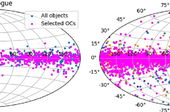 IIA GEETA RANGWAL
IIA GEETA RANGWALOrbits and vertical height distribution of 4006 open clusters in the galactic disk using Gaia DR3
Open clusters (OCs) in the Galaxy are excellent probes for tracing the structure and evolution of the Galactic disk. We present an updated catalog of the fundamental and kinematic parameters for 1145 OCs, estimated using the data from Gaia DR3 earlier listed in Cantat-Gaudin et al. (2020). This sample is complemented by 3677 OCs with astrometric solution from the catalog by Hunt & Reffert (2023). Using the Galaxy potential and the space velocities, orbits of 4006 OCs were computed, and we provide a catalog with orbital parameters such as eccentricity, perigalactic and apogalactic distance, and the maximum vertical height traced by OCs from the Galactic disk. The OCs in the sample are found to be distributed between 5 and 16 kpc from the Galactic center, with older OCs showing a radially extended distribution. The low number of old OCs in the inner region of the Solar circle will likely suggest their destruction in this area. Using the orbital estimations, we explored the maximum vertical height (Zmax) OCs can reach. We derive a quantitative expression for the dependency of Zmax with the cluster’s age and Galactocentric radius for the first time. The young (age < 50 Myr) and the intermediate age (50 Myr < age < 1 Gyr) OCs show similar values of Zmax till 9 kpc, with the latter group higher values beyond. OCs older than 1 Gyr show larger values of Zmax at all Galactocentric radii and significantly larger values beyond 9 kpc. Higher values of Zmax are found in the third Galactic quadrant, suggesting the link between the higher values and the Galactic warp. This large sample shows that young OCs are also involved in the diagonal ridge formation in the solar neighborhood.
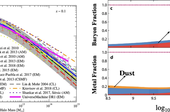 IIA MOUSUMI DAS
IIA MOUSUMI DASGalaxies, clusters, and intergalactic medium: A vision document for the Indian Astronomical Community
Galaxies, clusters, and the intergalactic medium (IGM) are the essential and interconnected components of the cosmic ecosystem. Galaxies, with their diverse morphologies and stellar populations, are the building blocks of cosmic structure, harboring stars, gas, dust, cosmic rays, magnetic fields, and dark matter. Galaxy clusters, immense gravitational unions of galaxies, offer profound insights into galaxy formation, cosmology, and the nature of dark matter. Bridging these cosmic islands is the IGM, a vast expanse of primordial gas enriched with traces of heavy elements. It harbors the majority of cosmic baryons distributed within an intricate network of filaments and voids. Together, galaxies, clusters, and the IGM offer a holistic view of the cosmic architecture, each playing a unique role in shaping the universe’s grand design. Indian scientists have made substantial contributions to research on galaxies, clusters, and the IGM, both theoretical and observational. To pursue and advance such contributions at par with the international level, the astronomical community emphasizes the urgent requirement for access to cutting-edge ground-based and space-based observatories and computing facilities. Access to state-of-the-art observational and computing facilities will sustain ongoing endeavors and enable Indian scientists to remain at the forefront of advancements in these fields, fostering continued relevance and innovation in astronomy research.
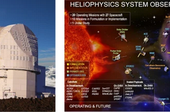 IIA DIPANKAR BANERJEE
IIA DIPANKAR BANERJEEIndian solar and heliospheric physics vision: Fundamental science to a space weather resilient society
The Sun is the only star that harbours a planet known to host life. Our home, the Earth, and other solar system planets reside within the heliosphere – the sphere of influence of the Sun. Within this domain, the Sun’s radiation, energetic particles, plasma wind, magnetic fluxes, and dynamic events, such as flares and coronal mass ejections influence planetary environments. While the Sun provides the basis for life, it also produces severe space weather that is hazardous to humanity’s space-based technologies. Long-term solar variations also influence planetary evolution and habitability. Dynamic solar variability originates in magnetohydrodynamic processes in its interior and atmosphere that provide a window to the plasma universe. Therefore, exploring the origin, impact, and overarching astrophysical implications of the Sun’s activity is of fundamental importance to humanity. In this vision for solar and heliospheric physics – contributing to the vision document of the Astronomical Society of India – we provide a brief synopsis of the current status of the field, focus on outstanding challenges that are expected to drive the field over the next decade or so, and based on an assessment of the expertise available within India, we provide specific recommendations that the Indian community is well poised to address.
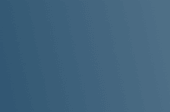 IIA SUBINOY DAS
IIA SUBINOY DASCurrent status and prospects of cosmology research in India
Discoveries in cosmology over the last few decades, using multi-band electromagnetic (EM) observations from radio to gamma rays, have shaped our understanding of the Universe and opened a plethora of open questions. The open questions span from the early stages of the Universe, focused on uncovering the physical processes that governed its formation and rapid expansion, to the later evolutionary phases characterized by a transition from dark matter domination to the current epoch dominated by dark energy components that collectively account for ∼95% of the Universe’s total energy budget. Though their existence is indicated by multiple independent observations, the law of physics, which governs them remains unknown. In the coming years along with multi-band EM observations from telescopes with better sensitivity, an independent cosmological messenger gravitational waves (GW) spanning over nearly 20 decades in frequencies will be able to probe and bring insights to these open questions from the early phase of the Universe till the current stage, and possibly will unveil cosmic mysteries which are currently unknown. These observations will open discovery space in the early epoch of cosmic acceleration known as cosmic inflation, the nature of dark matter, the cosmic evolution of dark energy, the total mass of neutrinos and beyond standard model particle physics. It will also shed light on the cosmic evolution of galaxies, and black holes, and how their interplay has shaped the observable Universe. Furthermore, the area of multi-messenger cosmology by exploring the synergy between GW, EM and neutrino observations will bring to light several uncharted territories in cosmology and fundamental physics. This document provides a summary of the current progress in cosmology and outlines future directions and prospects in the field.
 IIA STALIN, C. S
IIA STALIN, C. SSupermassive black holes and active galactic nuclei
Indian scientists have made significant contributions to the study of supermassive black holes (SMBH) and active galactic nuclei (AGN) through observational efforts, advanced data analysis, and theoretical modelling and simulations. Observational studies have been carried out using India’s own facilities’, such as AstroSat (India’s first dedicated multi-wavelength space observatory in UV and X-ray bands), the Giant Metrewave Radio Telescope (GMRT), and optical/IR ground-based observatories as well as leading international observatories. This paper provides an overview of India’s contributions and outlines a vision for advancing future research in SMBH and AGN. It is an expanded and detailed version of the chapter on SMBH and AGN featured in the recently released Vision Document of the Astronomical Society of India.
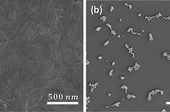 IIA PHANINDRA, D. V. S
IIA PHANINDRA, D. V. SFabrication of liquid-crystal retarders for solar polarimetry: A facile method
A high-precision polarimeter for simultaneous multi-line spectropolarimetric Sun observations is under development at Indian Institute of Astrophysics. Towards this end, we plan to use liquid-crystal retarders as the polarization modulators. A prototype liquid-crystal variable retarder (LCVR) is fabricated and characterized. A solution-processed method is adapted to fabricate the LCVR using commercially available E7 nematic liquid-crystal material. Thickness of the alignment layer of the LC retarder was optimized to achieve uniformity. The fabricated LCVR demonstrates spatial uniformity of retardance comparable to a commercial waveplate. The device is found to have a low-range of operational voltage of <20 V and a very short response time of <1 ms. Also, the device shows consistent operational stability.
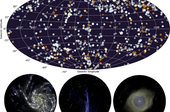 IIA STALIN, C. S
IIA STALIN, C. SUVIT data release version 7: Regenerated high-level UVIT data products
Ultra-Violet Imaging Telescope (UVIT) on board AstroSat is an active telescope capable of highresolution far-ultraviolet imaging (<1.5) and low-resolution (λ/δλ ≈ 100) slitless spectroscopy with a fieldof-view as large as ∼ 0.5◦. Now almost a decade old, UVIT continues to be operational and generates valuable data for the scientific community. UVIT is also capable of near-ultraviolet imaging (<1.5); however, the nearultraviolet channel stopped working in August 2018 after providing data for nearly 3 years. This paper gives an overview of the latest version (7.0.1) of the UVIT pipeline and UVIT data release version 7. The high-level products generated using pipeline versions having a major ver. no. 7 will be called ‘UVIT data release version 7’. The latest pipeline version overcomes two limitations of the previous version (6.3), namely: (a) inability to combine all episode-wise images; and (b) failure of the astrometry module in a large fraction of the observations. The procedures adopted to overcome these two limitations as well as a comparison of the performance of this new version over the previous one, are presented in this paper. The UVIT data release version 7 products are available at the Indian Space Science Data Center of the Indian Space Research Organization for archival and dissemination from 1 June 2024. New pipeline version is open source and made available on GitHub
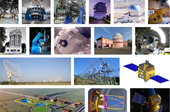 IIA ANUPAMA, G. C
IIA ANUPAMA, G. CTransients and time domain astrophysics
Time Domain Astronomy (TDA) has ushered in a new era of cosmic exploration. This has been possible with the advanced sensitive surveys that have allowed the discovery and classification of transients to reach unprecedented levels. Over the past decades, numerous classes of stellar transients, including various types of Supernovae (SNe), Novae, Gamma Ray Bursts (GRBs), Electromagnetic counterparts of Gravitational Wave (EMGW) events, Tidal Disruption Events (TDEs), Fast Radio Bursts (FRBs) and many more have been discovered. Of these, detecting the first EMGW event (GW170817/GRB 170817A) and the associated kilonova (AT2017gfo) resulting from a compact object merger stands out as a groundbreaking achievement. A coordinated multi-wavelength approach is crucial for studying these transients, as they exhibit unique behaviours across the different bands of the EM spectrum. This chapter presents an overview of the current understanding and open questions of a few select classes of transients. We highlight the focus areas of TDA in terms of their scientific merit based on existing and future facilities, as well as nationwide and international collaborations. The recommendations made in this chapter are aligned to meet the requirements of all TDA studies.
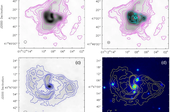 IIA RAVI JOSHI
IIA RAVI JOSHISample of 25 radio galaxies with highly unusual radio morphologies, selected from the LoTSS-DR2 survey at 144 MHz
From a careful visual scrutiny of the radio structures of a well-defined sample of 2428 sources in the LoTSS-DR2 survey made at 144 MHz with a 6 beam, we have selected a subset of 25 (i.e., 1%) sources showing highly unusual radio structures, mostly not conforming to the prevalent radio morphological classification. Here, we present and briefly discuss the basic properties of these rare morphological outliers and attempt to dissect their morphological peculiarities based on multi-wavelength radio images and radio-optical overlays. Also, we underscore the need to accord due importance to such anomalous radio sources, considering the challenge they pose to the standard theoretical models and simulations of extragalactic double radio sources.
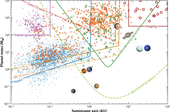 IIA RAVINDER K. BANYAL
IIA RAVINDER K. BANYALExoplanets
The study of exoplanets is one of the fastest-growing areas in astronomy. The number of known exoplanets has increased dramatically, providing new insights into the galaxy’s diversity and abundance of planetary systems. The field has progressed significantly from discovery and characterization to various new areas, including exploring the demographics of exoplanets, examining their atmospheres, investigating the process of planetary formation and evolution, studying the interactions between stars and planets, and searching for signs of life beyond our solar system. These advances are made by drawing expertise from astrophysics, planetary science, atmospheric science, and astrobiology. Recently, there has been a steady growth in the number of Indian astronomers involved in exoplanet research. This exoplanet vision document, prepared under the aegis of ASI, summarizes the field’s current status globally. It also highlights the efforts of various research groups in the country and identifies potential directions for future research. To be able to do competitive exoplanet science within the country, we suggest implementing capacity-building measures in the areas of modeling and theory, establishing new observational facilities, and fostering collaboration within the country and abroad. Specific recommendations of the exoplanet working group are as follows: (1) We identify RV follow-up observations of exoplanets discovered by ongoing and future space-based surveys such as TESS, Gaia, and PLATO as the highest priority areas for the community. We recommend a 4-m class (or large) telescope mounted with a high resolution (R 100 K) spectrograph for the RV follow-up and transit spectroscopy studies in the long-term (10–15 yr). In the interim, sufficient time should be made available to the community on the PARAS-2/PRL facility and the upcoming high-resolution spectrograph on DOT/ARIES for these studies. (2) Developing new technology and building state-of-the-art exoplanet instruments for the future 10 m facility class National Large Optical Telescope (NLOT). (3) Leveraging ISRO’s strength in the space program to plan and develop small (e.g., UV, optical, and IR transit payloads) and big space missions (e.g., ExoWorlds) for exoplanet science. (4) Setting up a 1 m class transit telescope for survey and follow-up studies and to have synergy with other observatories for continuous and time-critical observations across different longitudes. (5) Expanding computational resources and augmenting modeling/simulation efforts. (6) Taking the excitement of exoplanet discoveries to the public by integrating it with various outreach and educational activities of the institutes.